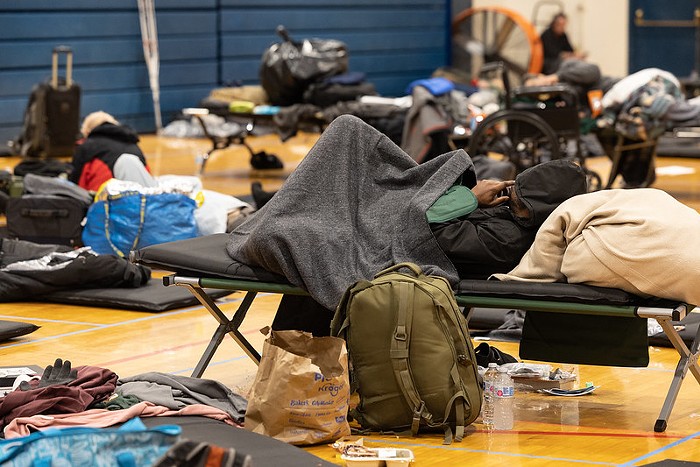FOR TWO WEEKS in 1980, the French artist Sophie Calle essentially stalked someone. It started innocently enough: She'd begun casually following strangers in Paris, but was intrigued when, after following one, she encountered him again at an art opening. "During the course of our conversation," she writes of that meeting, "he told me he was planning an imminent trip to Venice. I decided to follow him."
So begins Suite Vénitienne, the artist's book Calle compiled as evidence of that decision, and the ensuing project; it's an immersive piece that, at the intersections of performance, photography, and surveillance, remains hugely influential 35 years later. Dedicated to Laurie Anderson, the book finds Calle in faux-fugitive mode, as she travels to Venice and tracks the movements of one Henri B. Disguising herself with a blonde wig, and carrying a camera with a special mirrored lens that allows her to photograph people without their knowledge, Calle records an odd chronicle of amateur espionage, which reads with the same compulsive intensity as any true-crime text.
That may also be what makes it so charming—that Calle generates a sense of suspense when, in fact, there is none. She's invasive, and perhaps a nuisance, but she isn't a predator, and Henri B. is basically a known quantity already. Throughout Suite Vénitienne, Calle embeds small asides to herself within blow-by-blow documentation of her investigation. These fragments—printed in blue ink—reveal her inexplicable desire to learn more about Henri B., in the most artificially difficult way possible. But her excitement is real. "I caught a glimpse of one hour of Henri B.'s life," she writes triumphantly after a successful morning spent following him, undetected.
Years out of print, Suite Vénitienne is one of two of Calle's artist's books being reissued this year by Los Angeles' Siglio Press, and it's a rare chance to see her early work at close range. In Siglio's other re-release, The Address Book, Calle copies the pages of a stranger's address book, then maps his emotional life by contacting each of the people within it. She's made a career out of provocations like these, with major shows everywhere from the Whitney to Paris' Centre Georges Pompidou. Her work has also grown in scale, and sheer reach, from 2007's Venice Biennale, where she exhibited the acclaimed installation Take Care of Yourself (named after a breakup letter), to the North Pole, where Calle traveled to a glacier to bury a ring and a necklace belonging to her late mother. She's also spent the night in a bed installed on the Eiffel Tower, asked Paul Auster to create a character based on her (he complied), become a hotel maid for the sole purpose of spying on people, and invited strangers to sleep in her bed while she photographed them.
Looking at Calle's early work, the future expanse of her art is readily apparent in the small details she records, in her elaborate construction of suspense and fake reportage, even in her project's dependence on a certain invasion of privacy, but most of all, an almost compulsive curiosity. Ultimately, this curiosity is the real subject of Suite Vénitienne, even when Henri B. is absent, and even when Calle pretends otherwise. "What did I imagine? That he was going to take me with him, to challenge me, to use me?" she writes despairingly after a harrowing—for Calle—meeting with Henri B., who realizes he's being followed. "Henri B. did nothing. I discovered nothing. A banal ending to this banal story." But even despair cannot kill Calle's curiosity. Her next move? Dancing "for hours on end," and spending the night on a bench with a harlequin.













